UNIT 3.5
CAPITAL
3.4.1 • Role of the money and capital markets.
MONEY MARKET
Definition
Money market is a market where short-term money capital and short-term debt obligations are traded.
S. M. Goldfield and L. V. Chandler have defined money market as one "in which short-term debt obligations are traded."
IMPORTANCE OF A MONEY MARKET
A money market performs a number of functions in an economy:
1. Short Term Financial Needs of Business
It provides short-term funds to the public and private institutions including commercial banks to meet their short-term liquidity requirements. Thus in this way money market helps the development of commerce, industry and trade within and outside the country.
2. Profitable use of surplus funds
It provides an opportunity to banks and other financial institutions to use their surplus funds profitably for a short period.
3. Converts Savings into Investment
It allocates savings into investment and tends to obtain an equilibrium between the demand for and supply of loanable funds. In this way, the money market helps in more rational allocation of resources.
4. Liquidity and Safety of Financial Assets
It promotes liquidity and safety of financial assets and thereby it encourages savings and investment. This is important in LDCs where savings and investments habits are rather poor. In many rural areas of LDCs, savings too often comprise land and gold-holdings rather than the holding of financial assets which could channel savings into productive investment.
5. Financial Mobility
A money market promotes financial mobility by enabling the transfer of funds from one sector to the other. Such flow of funds is essential for the development of the economy and commerce.
6. Financial Needs Of Commercial Banks
The existence of a developed money market removes the necessity of borrowing by the commercial banks from the central bank at a higher rate. If the former find their reserves short of cash requirements they can call in some of their loans from the money market.
7. Financial Needs Of Government
The money market provides the government in borrowing short-term funds at a low interest rates on the basis of treasury bills. On the other
hand, if the government were to issue paper money or borrow from the central bank, it would lead to inflationary pressures in the economy.
8. Success of Monetary Policy
A well-developed money market is essential for the successful implementation of the monetary policies of the central bank. It is through the money market that the central bank is in a position to control the banking system and thereby helps in the growth of
commerce and industry.
9. Economy in the use of Cash
The money market deals in near money assets and not money proper. It helps in economizing the use of cash and provides a suitable and safe way of transferring funds from one place to another.
INSTRUMENTS OF MONEY MARKET
Basically it has three most important instruments which are as follows:
1. Promissory notes;
2. Bills of exchange; and
3. Treasury bills.
4. Commercial Paper
Now we briefly explain these instruments.
(1) Promissory Notes
The promissory note is the earliest type of bill. It is a written promise on the part of a businessman to pay to another a certain amount of money at an agreed future date. Usually, a promissory note falls due for payment after 90days with three days of grace. A promissory note is drawn by the debtor and has to be accepted by the bank in which the debtor has his account to be valid. The creditor can get it discounted from his bank till the date of recovery.
(2) Bill of Exchange
The bill of exchange which is similar to the promissory note, except in that it is drawn by the creditor and is accepted by the debtor or bank of the debtor. The creditor can discount the bill of exchange either with a broker or a bank.
Promissory notes and bills of exchange are known as trade bills.
(3) Treasury Bills
Treasury bills (or T-bills) are short-term securities that mature in one year or less from their issue date. The T-bills are sold for a price less than their par (face) value, and when they mature govt. pays the buyers their par value. Buyers’ interest is the difference between the purchase price of the security and what govt. him at maturity (or what buyer get if he sell the bill before it matures).
T. Bills. are negotiable instrument and these are 'classified by the Government of Pakistan, Ministry of Finance, SBP as government's floating debt and are highly liquid instruments. In
Technically T. Bills can also be traded on the stock exchange. The investors earn a return because they receive more for the bills at maturity than they paid for them at issue.
(4) Commercial Paper
This is an important instrument of money market. Companies may borrow by issuing commercial papers. These are debt instruments with a maturity period of less than one year. These are considered as highly liquid debt instruments. In Pakistan Pak Rupee Commercial papers are being widely used by companies.
MONEY MARKET IN
Money Market in
(1) Call Markets
This is an inter bank arrangement for borrowing and lending from each other. Loans from excess cash reserves of commercial banks are sometimes referred to as inter-bank loans. Call loans are usually made without any security. These loans are given from excess reserves for a very short period of time, usually of an overnight, one day, one week or a month long duration and are conducted by the scheduled banks with each other. The banks need these call loans either to maintain their 5% reserve requirement with SBP or to meet urgent cash requirements. These loans are repayable on demand.
(2) The Discount Market
It is the market for buying and selling bill of exchange. Holders of bills get these bills discounted at discount houses usually the commercial banks and the commercial banks get these bills rediscounted from SBP.
(3) The Inter Company Market
This is a market for short term borrowing and lending between companies without any financial intermediaries. The treasury departments of large companies and borrow from other companies for urgent or short term financial needs.
(4) Pak Rupee Commercial Paper Market
In this market companies raise debt by issuing commercial papers.
(5) Repo (Repurchase Agreements)
A repo is a short-term interest-bearing loan against collateral. The over-the-counter repo market is now one of the most important and most active sectors in money markets. Repos are widely used for investing surplus funds short term, or for borrowing short term against collateral. Dealers in securities use repos to manage their liquidity, and finance their inventories
Repos, short for repurchase agreements, are contracts for the sale and future repurchase of a financial asset, most often Treasury securities. On the termination date, the seller repurchases the asset at the same price at which he sold it, and pays interest for the use of the funds. The annualized rate of interest paid on the loan is known as the repo rate. Repos can be of any duration but are most commonly overnight loans. Repos for longer than overnight are known as term repos. There are also open repos that can be terminated by either side i.e. by buyers or by sellers on a day’s notice.
The largest users of repos are the dealers in government securities.
PARTICIPANTS OF MONEY MARKET IN
The participants of money market in
1. The State Bank of
2. Commercial banks;
3. Cooperative banks;
4. Saving banks;
5. IDBP;
6. PICIC;
7. HBFC; and
8. Government
CAPITAL MARKET
Definition
Capital market is a market where Long-term money capital and long-term debt obligations are traded.
In other words it is a market "in which long-term debt obligations are traded."
The capital market is a medium for the allocation of long term funds usually for capital formation.
Capital market consists of series of channels through which the savings of the community are mobilized and made available to government, state owned business projects and to promote entrepreneurs for undertaking investment activities. The public can obtain long-term securities either directly or through intermediaries.
Division of Capital Market
Capital market consists of two segments namely:
(1) The Non-Securities Markets (2) The Securities Markets
These are explained as under
(1) The Non-Securities Markets
It provides non-negotiable medium and long-term debt funds through financial institutions such as Development Finance Institutions (DFIs), commercial banks and contractual saving institutions which mobilize savings and then provide these funds directly to business, industry and other users of the funds.
The instruments of the non-security markets are:
(a) Loans
(b) Mortgages
(c) Leases
(d) Sales and lease-back.
(2) The Securities Markets
Securities market provides medium and long-term equity and debt funds in negotiable form which are issued by corporations and governments, through financial institutions such as investment or merchant banks and venture capital firms, directly to the investors and individuals and are then traded among the different holders. Investors in this way are able to sell their securities in the securities market, whenever they need funds and also through equities they are able to participate in the financial risk of the enterprise.
CAPITAL MARKET IN
The capital market in
(1) The stock market
It is a market place for buyers and sellers of second hand stock and shares. The prices of stocks and shares fluctuate freely by their demand and supply. In
(2) Bonds and securities market and the gilt-edged market
The market for buying and selling of government bonds and securities and bonds is called gilt edged market. This market is confined to the State Bank, commercial banks and the insurance companies. The government securities are held by the State Bank, commercial banks, insurance companies, local bodies, public cooperatives and provident funds.
(3) Banks
Banks provide medium term and long term loans for varying needs of the government and business.
(4) National Savings
In this market govt. borrows long term capital from private and commercial investors.
INSTRUMENTS OF CAPITAL MARKET
1. Federal Investment Bonds (FIBs)
2. Foreign Exchange Bearer Certificate
3. Bearer National Fund Bonds
4. Corporate Bonds
5. Equities
These are briefly explained below:
(1) Federal Investment Bonds
Federal Investment Bonds are issued by government. They are similar to Treasury Bonds. They are issued mostly for three different time periods, i.e.
(a) If they can mature after 3 years and are called the short-term debt of the government.
(b) If they mature after 5 years, they are called the medium-term debt of the government.
(c) If they mature after 10 years, they are called the long-term permanent debt of the
government.
(2) Foreign Exchange Bearer Certificates
These are issued by the banks. They are purchased in foreign currency. The less stable the exchange rate of a currency the higher the rate of return vice versa.
(3) Bearer National Fund Bonds
They are included in the money su
pply definition of money in
(4) Corporate Bonds
They are issued by corporations to raise funds, e.g. WAPDA Bearer Bonds. They are either registered or bearer. In case of the registered forms the name of the person who purchases them is registered in the corporation and transfer is possible by a certain specific procedure. Whereas in the case of the bearer bonds, whoever holds the bond is the owner of the bonds, e.g. the first two issues of the WAPDA Bearer Bonds were registered and the last 3 are bearer bonds.
(5) Equities
It can be regarded as a perpetual investment for until and unless the company goes bankrupt this does not stop. This is so because equity implies the investment in reserves, retained earnings and balance of profit and loss accounts of a firm. Federal Investment Bond is a government instrument whereas equity is the channel through which a large amount public can participate in the capital market.
FUNCTIONS OF (FINANCIAL) CAPITAL AND MONEY MARKET
By performing the two main functions of mobilization of savings and channeling of investment into productive enterprises, it helps to accelerate the rate of economic development, thereby increasing the production of goods and services together with the increase in the per capita income. However, broadly speaking, they can be classified into the following functions:
1. Financial Needs of Banks
On the demand side, it provides funds to commercial banks to meet their long-term capital and short term liquidity requirements.
2. Use Of Surplus Funds
On the supply side, it provides the financial institutions to use their funds profitability for a short period and longer period of time.
3. Equilibrium in demand and supply of loanable funds
The savings of the people are allocated to the investments. This assists to bring about the equilibrium in the demand and supply of the loanable funds.
4. Safety of Financial Assets
Financial market promotes the safety of financial assets.
5. Financial Needs of Government
It provides long term loans to the government to finance the development projects undertaken by the government.
6. Financial Mobility
It assists and promotes financial mobility in the economy which is necessary for rapid economic development.

